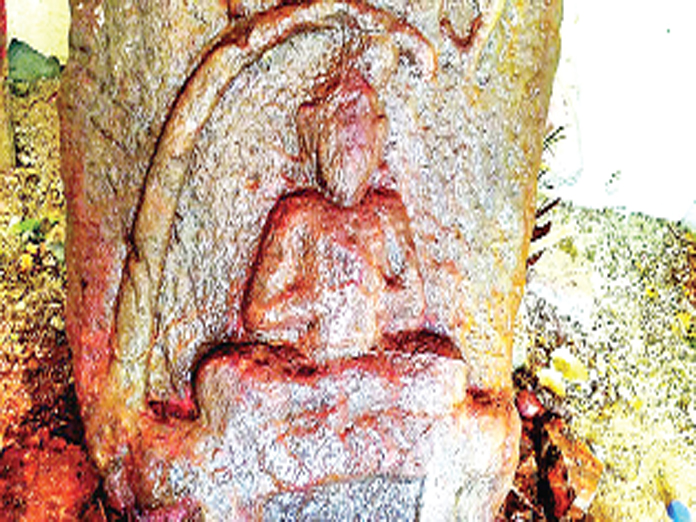Live
- Holi Festival: Liquor Outlets to Remain Closed for Holi in Hyderabad
- iQoo launches Neo 10R model
- Hyderabad: Woman Alleges Caste-Based Harassment by Roommates in Shaikpet
- Markets end on flat note
- Nifty Metal index falls after US tariffs
- AP minister clarifies on TIDCO houses, says all the issues will be addressed
- Uppal Stadium Preps for IPL with Rs 5 Crore Renovation
- Sebi speeds up rights issue process
- Ladhani Group to invest Rs 11K cr over 5 yrs
- Moody’s forecasts higher GDP growth in FY26

A rare sculpture of Atmahuti Sila stone of sacrifice, believed to be of preKakatiya era, reflecting the times of Kalyani Chalukya dynasty has come to light Thanks to the untiring efforts of Kotha Telangana Charitra Brundam KTCB to bring the regions unexplored history to the notice of people
Ramagundam (Peddapally): A rare sculpture of Atmahuti Sila (stone of sacrifice), believed to be of pre-Kakatiya era, reflecting the times of Kalyani Chalukya dynasty has come to light. Thanks to the untiring efforts of Kotha Telangana Charitra Brundam (KTCB) to bring the region’s unexplored history to the notice of people.
The Atmahuti Sila located on the fringe of Lingapur village under Ramagundam mandal, 225 kilometers north of Hyderabad, locally worshipped as Goddess Mutyalamma, is believed to be of 10th Century.
The Atmahuti Silas are a sort of Veeragallu carvings. While the Veeragallu is said to be a manifestation of a hero’s fight and place, the Atmahuti Silas used to reflect one’s self-immolation (sacrifice) in his bid to reach the summits of spirit and attain immortality.
The carving that is regarded as Goddess Mutyalamma at Lingapur has two parts. While the upper part depicts Goddess Shakti flanked by two Chamaradharinis (chauri-bearers), the lower part portrays a devotee in meditation while his hair was tied to a bamboo stick. It tells us that the devotee is ready to sacrifice by chopping his head.
The practice of Atmahuti was rampant during the transition of power from Rashtrakuta dynasty to Kalyani Chalukyas. It may be mentioned here that the last ruler of Rastrakuta dynasty Kakka II (Karaka) was killed by Taila II or Tailapa II in 973 AD.
Speaking to The Hans India, historian and epigraphist Sriramoju Haragopal said: “The end of Rashtrakutas and the emergence of Kalyani Chalukyas was a tumultuous transitory period. During this time, the kingdom had also witnessed a religious turbulence. Pashupatis, Kalamukhulus and Shakteyulus used to offer special pujas and rituals to almighty.”
As part of their rituals, they used to sacrifice their lives by beheading their heads or clawing their abdomens to get mukti (ultimate liberation). Installing the carvings of those who sacrificed their lives was a practice in those days, he said.
He said that this kind of carving was also found near Inavolu temple in Warangal Urban district and at Nandikandi temple in Medak district. The one carving that was found at Vanaparthi in Jangaon district was a woman.
Such carvings and some of them having inscriptions have been in display at the Telangana State Archeology Museum, Public Gardens, Hyderabad, Haragopal said, commending his KTCB colleague Samudrala Sunil who identified the Lingapur carving.

© 2025 Hyderabad Media House Limited/The Hans India. All rights reserved. Powered by hocalwire.com







